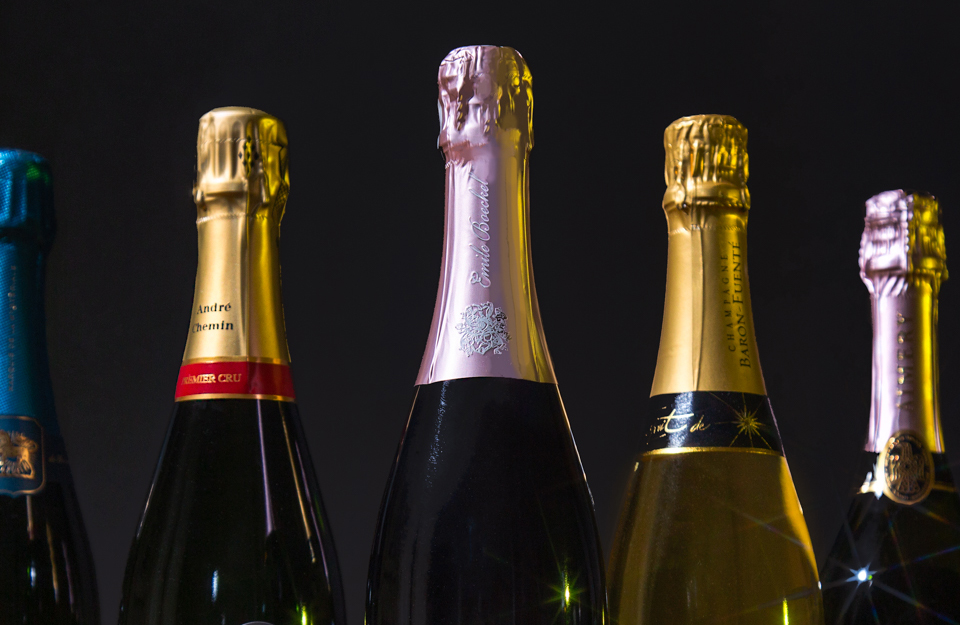This post is the second in our two part Champagne Series.
Click to view the first post, Champagne 101: The Region, The Method
Styles of Champagne
Since the wines of Champagne may be produced from one type of grape or more, there are a range of styles from which to choose. Here are some common examples:
Non-Vintage (House Blend) – entry-level bottling produced from a combination of Chardonnay and/or Pinot Noir and/or Pinot Meunier
Vintage (Luxury Blend) – produced from a single harvest, and only in the best years from Chardonnay and/or Pinot Noir and/or Pinot Meunier
Blanc de Blancs – “white of whites,” produced from 100% Chardonnay
Blanc de Noirs – “white of blacks,” white wine produced from Pinot Noir and/or Pinot Meunier
Rosé – often a blend of white and red wine, though it can also be made solely from black grapes
Levels of Sweetness

Although Champagne was originally a sweet wine, today the dry styles are more fashionable to drink. The amount of sugar added during disgorgement determines how sweet a Champagne will taste. The labels of Champagne bottles will always indicate a sweetness level, which can be found bellow, along with their explanation:
Brut Nature – bone dry
Extra Brut – dry
Brut – dry to off-dry
Extra Sec – off-dry to medium-dry
Sec – medium-dry
Demi-sec – medium sweet
Doux – lusciously sweet
To find top-tier Champagne bottles for your next occasion, visit us at WTSO.com!



